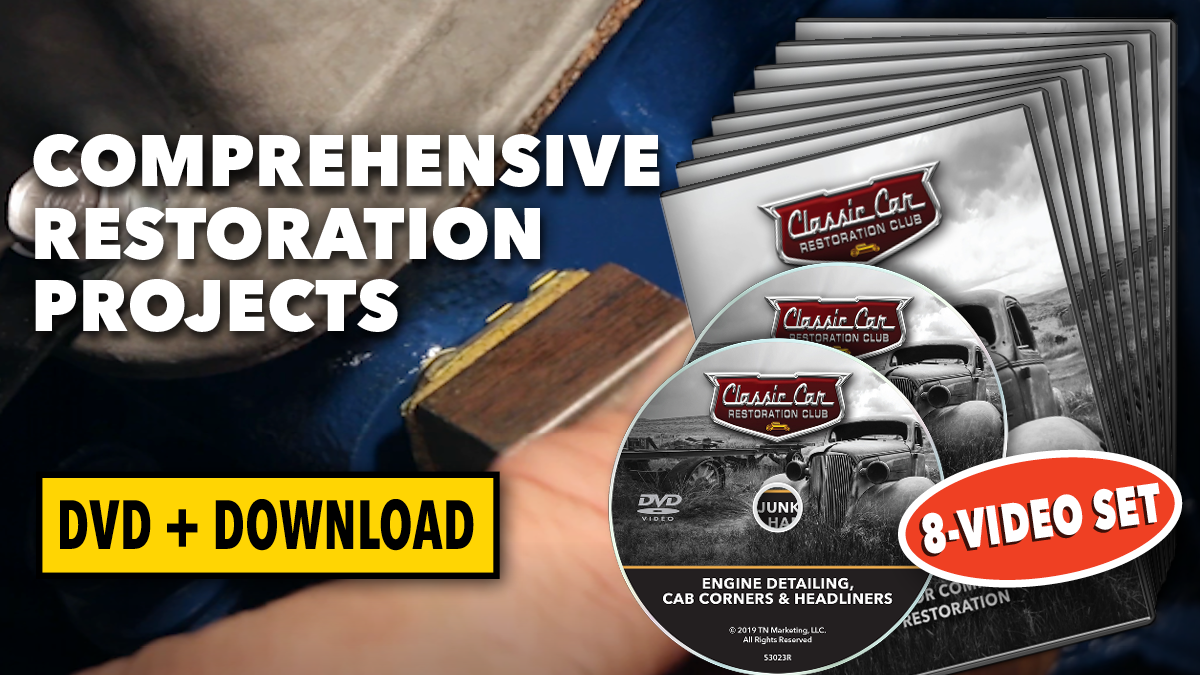
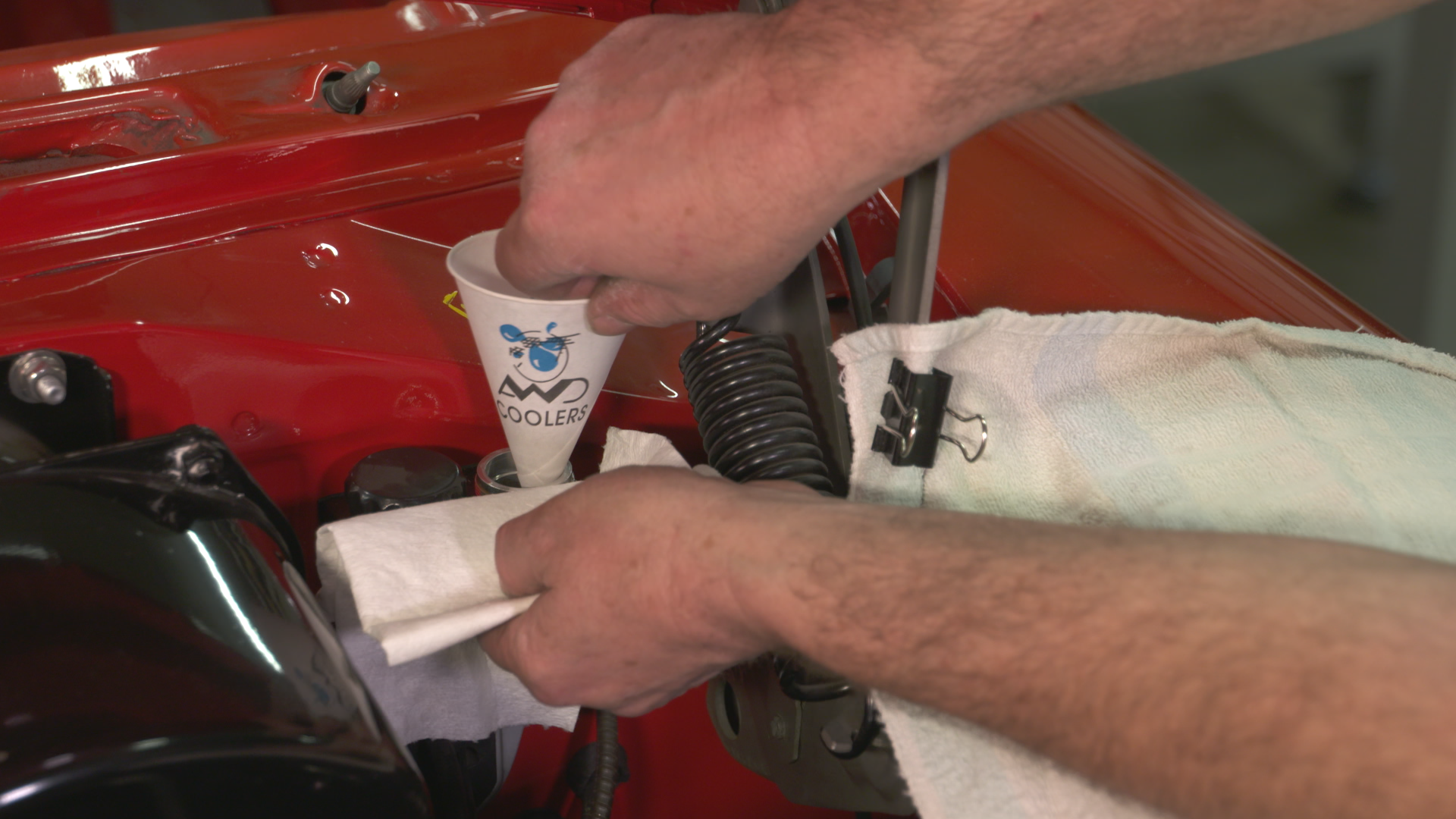

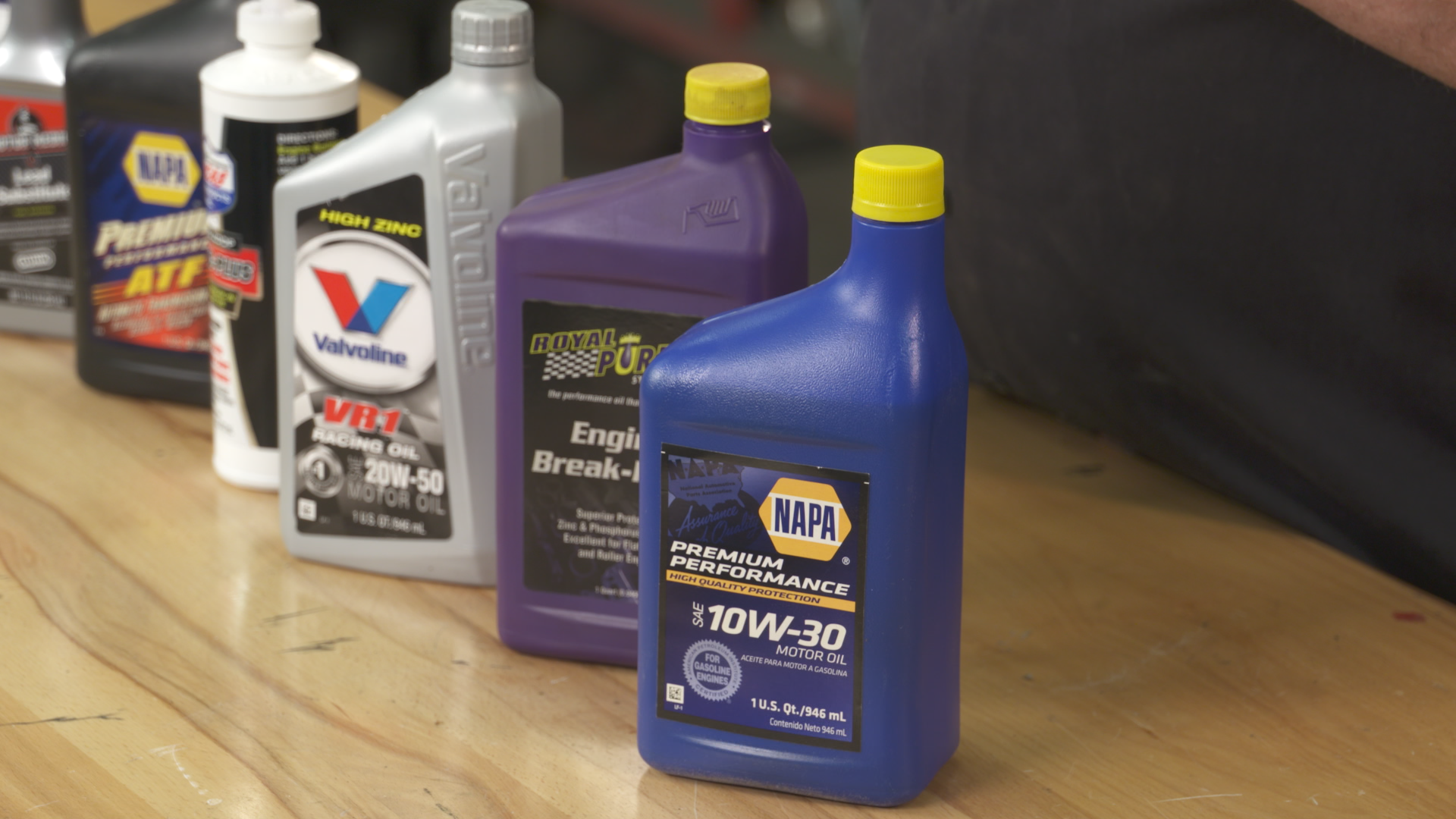
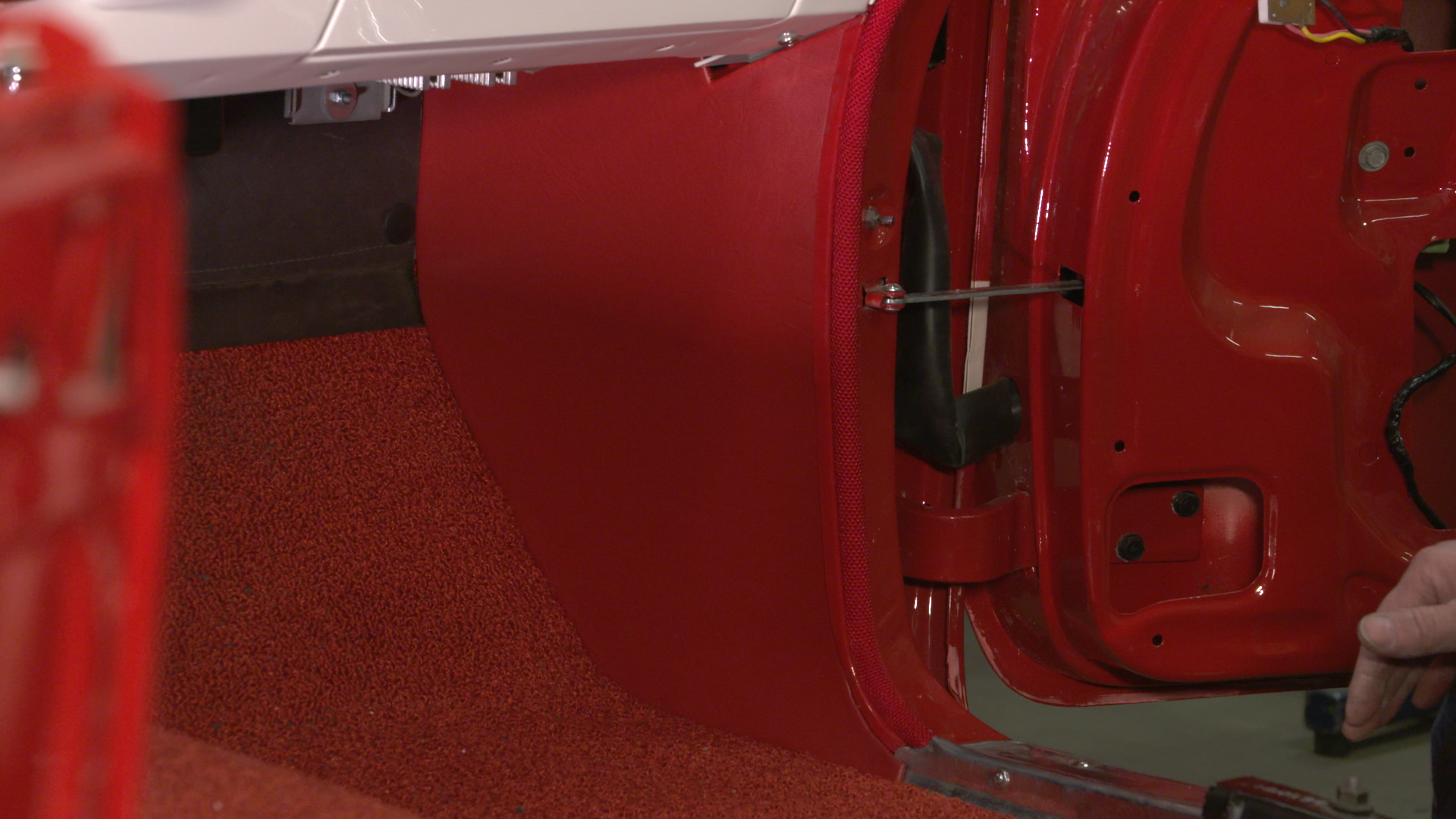
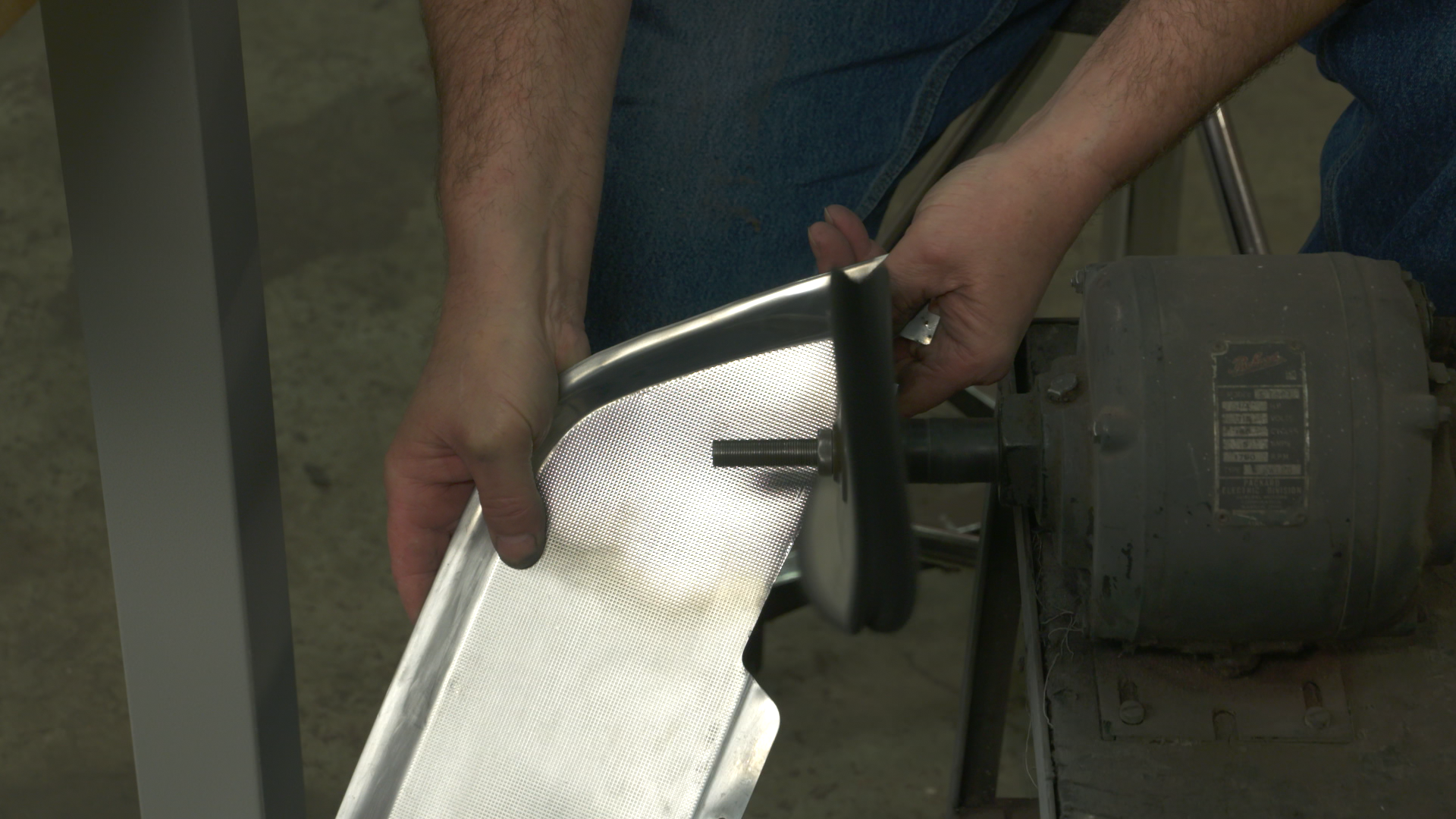
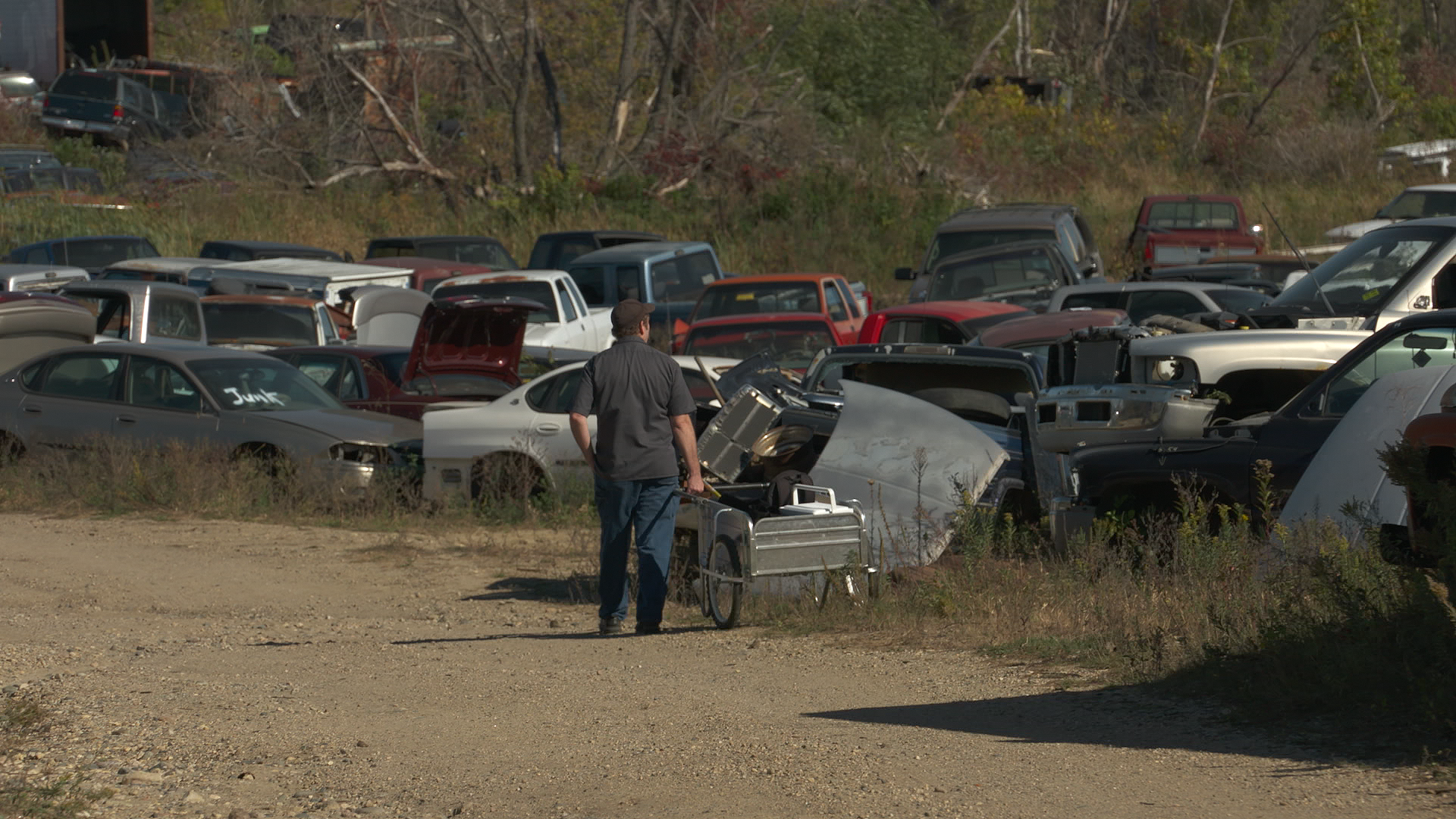
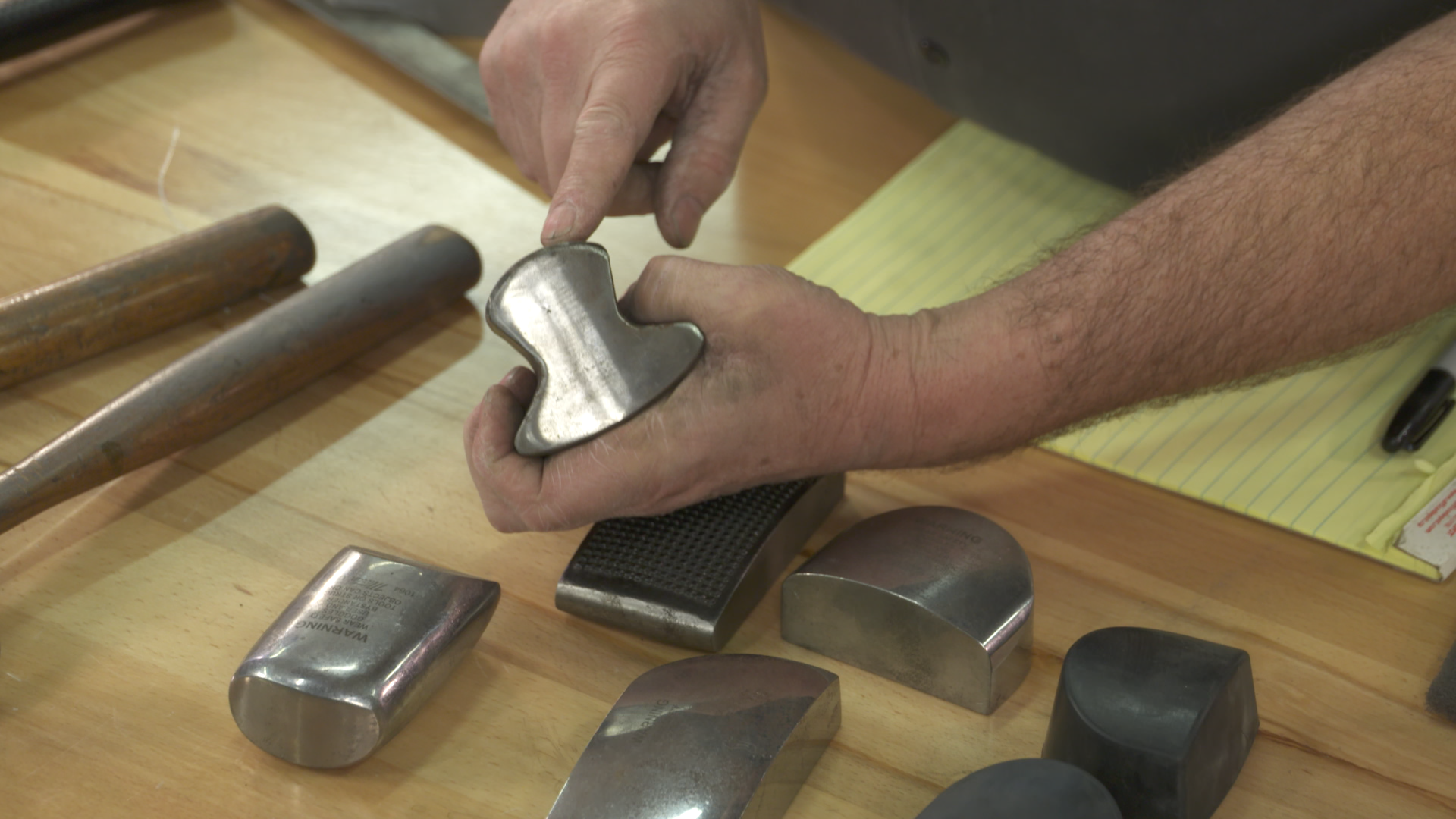
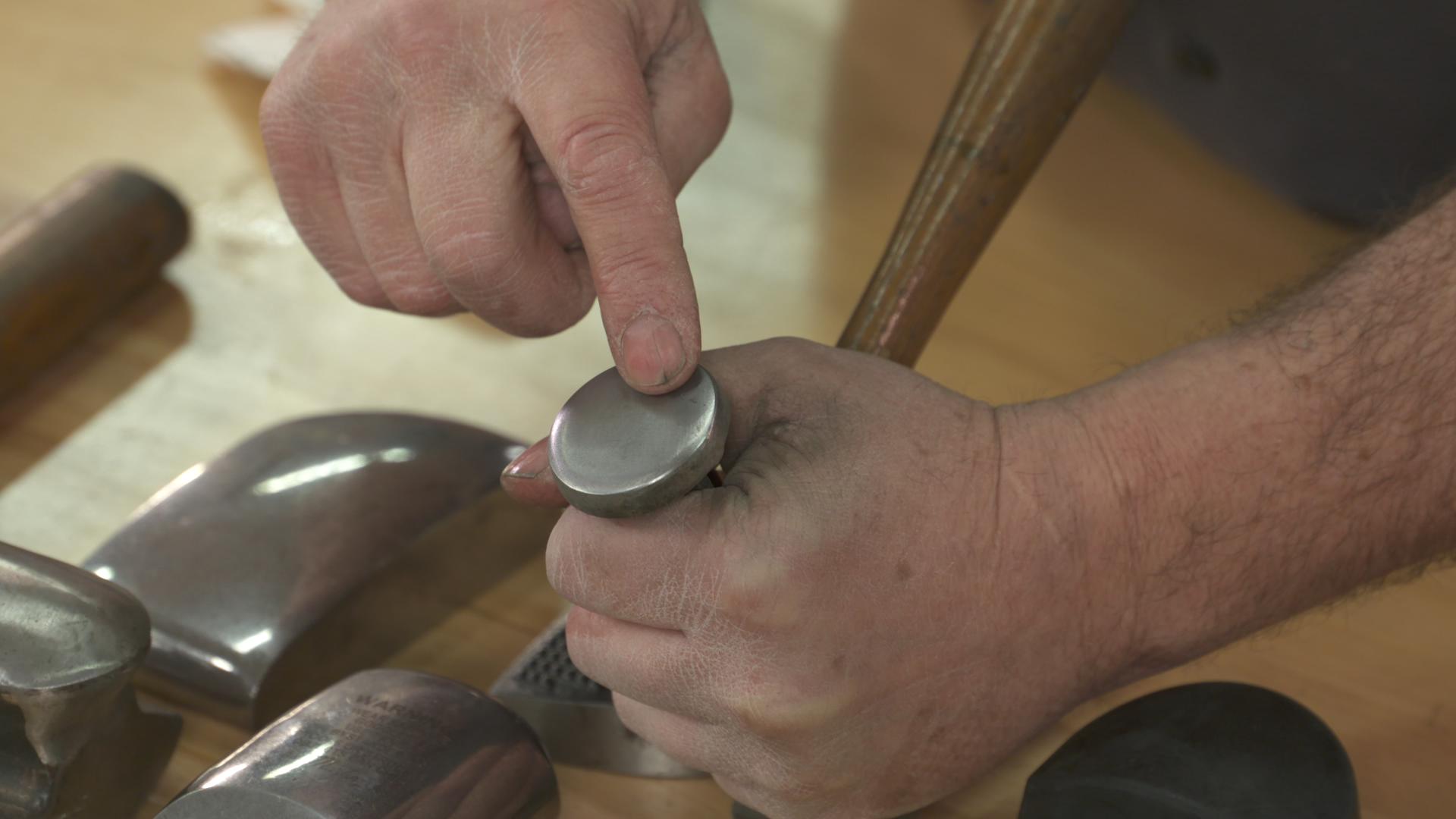

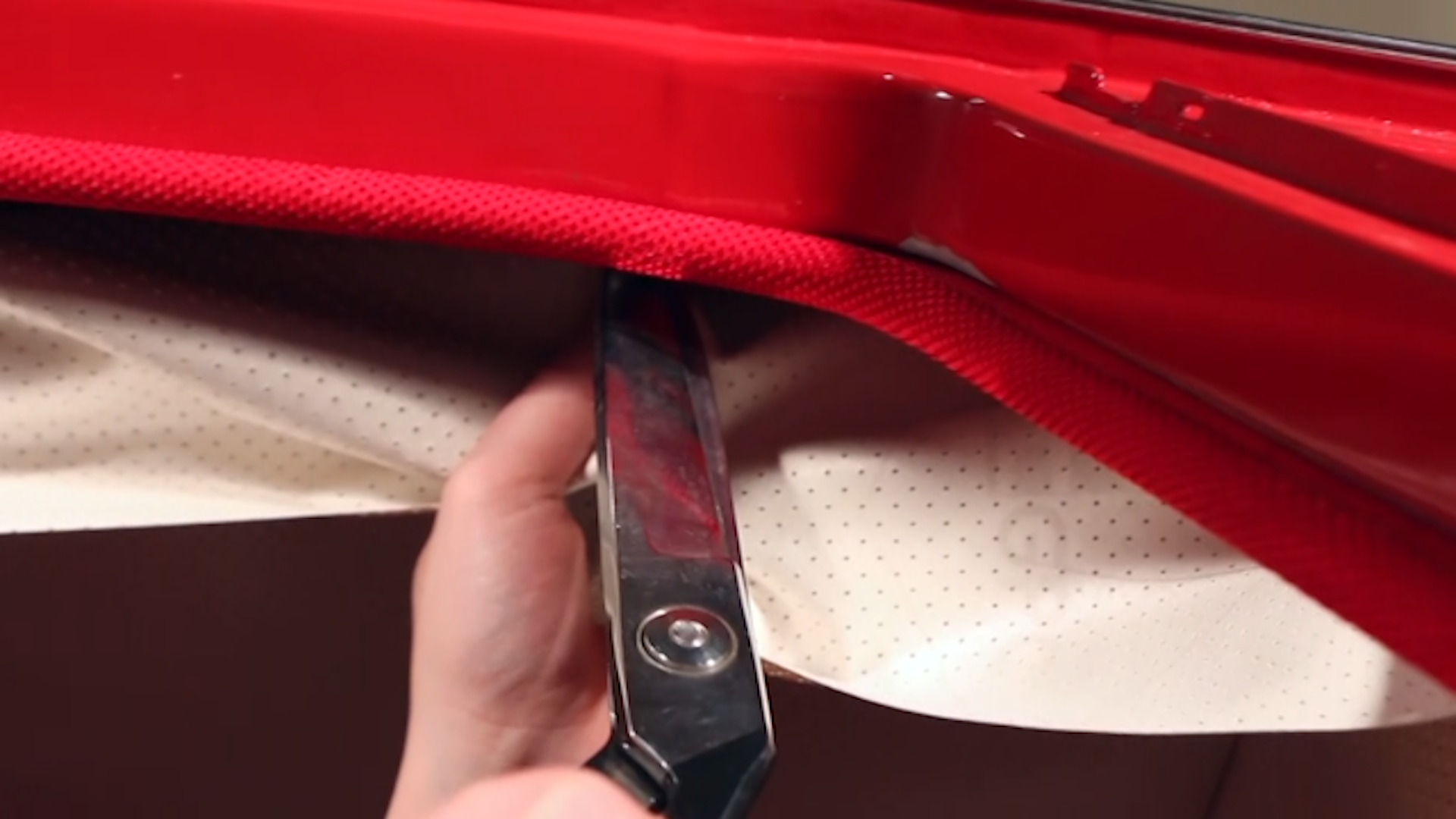

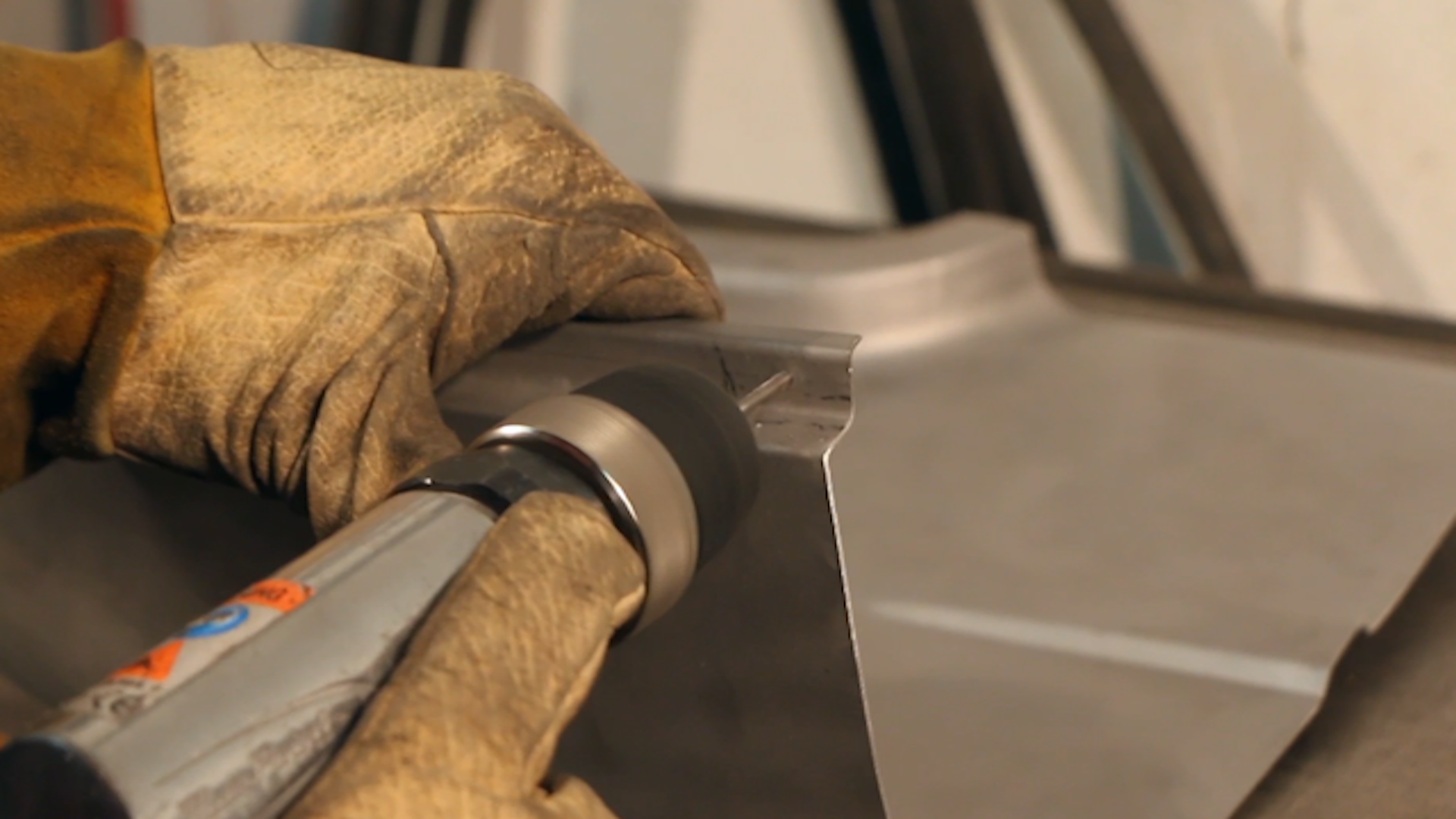















Comprehensive Restoration Projects 8-Video Set (DVD + Download)
$38.99
You Save 70%8-Video Set: Comprehensive Restoration Projects (DVD + Download)
As we’ve stated so many times before, restoring any classic car is simply a collection of smaller restoration projects. In this huge 8-Video set, we’ll take on a host of restoration projects and diagnostic tests.
One of the most common upgrades for classic cars is adding modern power brakes; we’ll explore both front and rear disc brake conversions; routing, cutting and bending brake lines and discuss the fluids needed to do the job right.
In this mega-set, we’ll also cover these important topics: Demonstrating how to bench bleed master cylinders; search for classic car parts in vintage salvage yards; cut and install safety glass; do a vacuum test; how to check for vacuum leaks; convert to LED lighting; weld patch panels; engine timing; electric choke conversion; installing Corbin hose clamps; headliner installation; straightening/polishing aluminum; plastic parts repair; building interior panels; exhaust system installation; install a fuel tank; making your own rubber parts and much more!
Having the right information is key to the success of any car restoration, and this set is a must-have for your classic car restoration reference library.
PLUS, you’ll get all 8 videos in both DVD and download form with your purchase. This way, you can save the instruction on any device you wish, and watch it anytime, anywhere!
With over 500 minutes of in-depth instruction, see below for details on each of the videos you’ll receive:
Brakes, Engine Vacuum and LED Lights – 48 minutes
The single most popular upgrade to classic cars is improving the brake system. Understanding how each of the components work together in a braking system is key to making the right choices.
In this video, we’ll upgrade a braking system and discover the differences in braking when larger master cylinder bore sizes are used as well as larger diameter and dual diaphragm brake boosters.
Mark Simpson also demonstrates the process of syringe bleeding master cylinders and different methods of bleeding brake systems. We’ll also discuss the different functions of the brake system combination valve to understand exactly how it works as well as what brake fluids are best for classic cars and why.
Engine vacuum is created as an engine runs, but the quality of the engine vacuum produced can help you diagnose potential problems with an engine. We’ll show you first-hand how to connect an engine vacuum gauge and run a test. We’ll also discuss what different readings can indicate about our engine health.
LED replacement bulbs have become commonplace in the classic car marketplace. Simpson discusses some of the options available and the steps you’ll need to take for your system to operate properly.
Car enthusiasts have argued the merits of white LED taillights versus red LED taillights bulb. Those who state the white LED bulbs are better in taillights insist they’re just brighter… period. While those who claim red LED bulbs are better point out that the red taillight lens filters out much of the white light and all of the red LED light travels through. We decided to put it to the test.
Under the Hood: Essentials – 66 minutes
If you drive your classic car, you’re going to have to work on it – or even improve it. Join Mark Simpson as he takes a look under the hood to tackle a few common tasks you’ll likely run into when working on your car.
Simpson explores a range of topics from properly using and lubricating gear pullers, to preventing brake fluid drips when filling master cylinders, to properly installing hoses and Corbin style hose clamps.
He also dives deeper into restoration details like recreating stapled to metal seals and converting from a manual heat riser choke to an electric choke on a Carter WCFB carburetor.
While we’re under the hood, we’ll give our ride a tune-up and replace the points, set the gap and discuss the process of setting the dwell. But we won’t stop there – with new points it’s essential we time out the engine, so we’ll look at the process of engine timing and discuss in detail the dynamics at work when an engine is timed as well as the effects of over advance or over retarded timing.
Interior Component Restoration – 74 minutes
Most classic car guys cringe at the prospect of having to work on the interior or upholstery in their car. But you don’t need to know how to sew to take on many projects in your car’s interior.
In this video, you’ll discover how to make your own ABS interior panels, build your own kick panels from scratch using textured upholstery panel board, repair cracked and broken plastic panels, and restore texture to plastic panels. Mark Simpson even shares a great tip to avoid chipping paint when putting screws into painted trim pieces.
Anodized aluminum interior trim pieces can become scratched and damaged, and the hard anodizing makes it nearly impossible to repair them. Simpson demonstrates how to efficiently remove the anodizing without damaging the aluminum. Then he demonstrates how to straighten and remove scratches, and then polish them to a high-luster.
Exhaust Systems, Fluids & Acid Etching – 66 minutes
Own a classic car long enough, and you’ll end up having to replace the exhaust system. Join Mark Simpson as he explains the process of installing a new Waldron’s stainless steel exhaust system on our project ’57 DeSoto.
He’ll explore the mounting process, clamping, exhaust hangers, pipe routing, and exhaust tips. As well as a few tips to help the installation go easier.
Exhaust pipes don’t always fit together as they should, often the mufflers are manufactured by a different source than the rest of the pipes and can be difficult to fit together. Simpson explains the use of a tail pipe expander and how it can be used to stretch pipe openings or fix damaged pipe ends.
Rusty cast iron exhaust manifolds or even master cylinders can be a distraction in a neatly detailed engine compartment. Simpson demonstrates how to freshen up the look of the cast iron parts with dry graphite spray that looks good and is easy to touch up.
Modern oils, fuels and fluids have changed over the years from when many of our classic cars were built. Simpson discusses many of these changes and how it is important to the life of your classic car to make the right choices when selecting which products to use in your car.
When restoring a classic car or building a custom car, there are always times when you need to create items that are no longer available or to create something that is totally unique to your car. Etching non-ferrous metals gives the car restorer many options to get creative with your classic. Mark Simpson takes us step-by-step through the process to create wheel center medallions, data plates, shift indicators and more. This is one sure way to set your car apart from the rest.
Power Disc Brakes – 63 minutes
Front disc brake conversions have become commonplace for many classic car enthusiasts. The added safety, performance and reliability make this conversion an essential upgrade for those enthusiasts who plan to enjoy their cars on the road. Mark Simpson takes you step-by-step through the process of installing a conversion kit. From removing all of the factory hardware to installing new brackets, rotors and calipers, you’ll see first hand how you too can improve the safety of your car, with just a few hours in the shop.
Next, Simpson takes you through the process to upgrade rear brakes, including the use of a drum puller. Then starting with a clean slate he takes you through the process of installing new caliper brackets, dust shields, rotors and calipers. While rear brakes only account for 30% of the stopping power of your car, Mark reminds us that should the front brakes fail the rear brakes become 100% of the ability of you to stop your car safely.
Having safely routed and cut to the correct length brake line is key to restoring a classic car properly. Even seasoned car restorers sometime struggle with bending and creating inverted flares in brake tubing. Simpson takes you through the process of bending brake line without kinks, properly cutting brake line and how to create a leak-free inverted flare.
Junkyard Tips and Hammer & Dolly – 54 minutes
Almost any serious classic car restoration project will include a trip to a vintage salvage yard. But making that trip both safe and rewarding requires a little preparation, planning and common sense.
Join Mark Simpson as he ventures into Rohner’s Auto Parts in Willmar, Minnesota in search of iron treasures. Simpson discusses the proper etiquette you should follow and important tips to discover parts that many may have overlooked. He’ll explore what tools are “must-have with you” and what tools are better left in the car unless needed. And of course we couldn’t help but look around at all of the hidden treasures Rohner’s has to offer.
Whether you just found a good fender in the salvage yard or you’re simply working on the parts your car already has, it’s common for there to be a few dents and dings it has acquired over the years.
Engine Detailing, Cab Corners & Headliners – 80 minutes
A high-end restoration is all about the details, and often it’s this attention to details that sets the good cars apart from the great cars. Join us as we head to RJ Restorations where owner Bob Wilson shares some of his detailing insights for the engine compartment. Learn the tips and tricks Wilson uses, including creating stamps and decals, pant stick markings, decal placement and more.
Cab corners on pickup trucks are notorious for rusting and repairs can be difficult in this tight area also. We join Gary Simpson as he dissects the cab corner of a ’54 Ford F100 then systematically rebuilds the sheet metal to near seamless perfection. Simpson demonstrates how to properly fit patch panels, hammer weld and metal finish the welds.
Upholstery is one of those projects many of us would just rather not deal with, but with the right products and preparation even difficult tasks become possible. Join our team as we install a new headliner into our project DeSoto. With a little time and effort, you can achieve professional quality results at a fraction of the price.
Some rubber parts are simply not available, but with a little ingenuity you can create high-quality unattainable parts. Mar Simpson demonstrates how to create power window looms for a late 50s MoPar using PlastiDip and copper tubing.
Safety Glass, Inspections & Fuel Tanks – 77 minutes
Most car enthusiasts will never cut their own safety glass, but know what goes into it can help any restorer better prepare their cars for glass replacement. Master glass cutter, Jim Lundquist, shows and explains to you many of the common tools used to remove and install glass in classic cars; and demonstrates the process of cutting, grinding and installing classic car glass into a framed glass side window of a fifties Oldsmobile convertible. Lundquist also demonstrates the process of removing lower glass channels from original glass and reinstalling them on new glass, then Jim completes the glass restoration on a classic 1935 Studebaker by installing new glass channels and door sweeps.
Having a second set of trained eyes carefully inspect your car for any safety concerns is a “must-have” for your peace of mind. Mark Simpson explains the importance of classic car safety inspections and takes you through a traditional safety inspection process with important considerations we all should be aware of when building our classic cars.
Our classic cars often sit for months at a time without being used or in some cases they’ve sat for decades before being restored. Simpson takes you through the process of inspecting an old fuel tank, preparing a new one and installing it safely into a car.